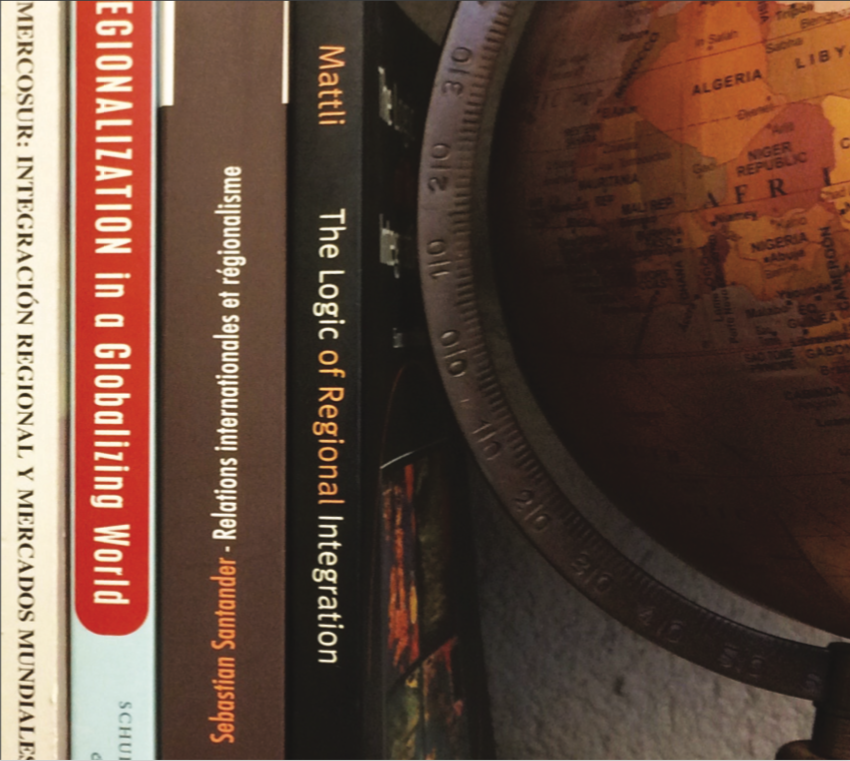- Startpagina tijdschrift
- 1/2020 - Special Issue - Eurasian regionalism: glo...
- The Intermarium as the Polish-Ukrainian Linchpin of Baltic-Black Sea Cooperation by Ostap Kushnir (ed.) (Newcastle: Cambridge Scholars Publishing, 2019, 210. ISBN: 978-1-5275-2712-6)
Weergave(s): 1082 (9 ULiège)
Download(s): 0 (0 ULiège)
The Intermarium as the Polish-Ukrainian Linchpin of Baltic-Black Sea Cooperation by Ostap Kushnir (ed.) (Newcastle: Cambridge Scholars Publishing, 2019, 210. ISBN: 978-1-5275-2712-6)

1While organizing a recent conference about the Intermarium, we were making a sketch for the banner with a map of the region, where I had to draw its borders. There, I stumbled upon the main setback of the Intermarium concept – its ambiguity and abundance of interpretations. Due to this, the concept is oftentimes overgeneralized not only by the Western academia and overromanticized by the researchers from the states belonging the region. The book “Intermarium as the Polish-Ukrainian Linchpin of Baltic-Black Sea Cooperation” edited by Ostap Kushnir and including contributions written by Daria Nalęcz, Volodymyr Poltorak, Kateryna Pryshchepa, Maksym Bugriy, and Tomasz Napiorkowski, attempts if not to reconcile, then at least to find the contact points in interpretations of the concept in the framework of Polish and Ukrainian approaches. Hence, it focuses on the Polish-Ukrainian linchpin in the region that famously holds the keys to command over the World in the interpretation of Halford Mackinder.
2Truly, the discussions regarding Central-Eastern Europe rarely overlook the importance of geopolitics in the region. Being situated between the centres of influence both from the East and from the West, the countries had an uneasy choice to make, if any. Behind this choice, the idea of creating the Intermarium alliance was relegated to the background ever and again. It originated among the Polish politicians in the late 19th century and was firstly officially pronounced by Józef Piłsudski. The unfold of events in the 20th century, however, was unmerciful to the region and further discussion of the project were put aside until the end of the Cold War. Thus, after regaining the independence by the countries of Central-Eastern Europe, the discussions were reviewed and different interpretations of the concept emerged.
3The book is a collaborative work of researchers with the aim to find a framework for the contemporary discussion of the concept. It can be divided into two parts: first dealing with the historical interpretations of Ukrainian and Polish visions of the Intermarium, and the second devoted to the main spheres of cooperation between the two countries with each other and the rest of the region. It opens with the chapter written by Daria Nalęcz that provides the historical outline of the concept from the Polish perspective. She considers three periods of formation and development of the concept. The first period relates to the time of emergence of the project in late 19th century as a validation of reinstitution of Polish inde-pendence and as the main strategic safeguard from the threat posed by the Russian Empire. As conceptualized by Piłsudski, Poland had to take the lead in uniting the nations after the collapse of the Empire – a policy, which was widely referred to as Polish Prometheism. The second period denotes the reinterpretation of the Intermarium concept after Piłsudski’s death, which was much less ambitious due to the turbulent atmosphere in the region during late 1930s. Finally, during the post-communist times, the cooperation was perceived as a collaboration of free and equal states, though with divergent national interests. As a result, the focus was put on integration with other international structures rather than establishment of the new ones, not to mention the absence of non-members of the EU, such as Ukraine, from the collaboration.
4Interestingly, Ukrainian vision of the Intermarium concept, which is presented in the next chapter by Volodymyr Poltorak, offers a rather different perspective both territory- and time-wise. While Polish political thinkers trace its roots to the Polish-Lithuanian Commonwealth, Ukrainian historians and philosophers, such as Ivan Lysiak-Rudnytsky, Mykhaylo Hryshevsky, Mychaylo Chajkowski and others, consider Kyiv Rus as the origin of the concept and refer to it as Black-Baltic Sea space. Moreover, even though both Polish and Ukrainian perspectives saw the main threat in the East – first, Mongols, and then Tsardom of Muscovy – both sides often considered themselves as adversaries, such as during the confrontation between Polish-Ukrainian Commonwealth and Ukrainian Cossacks – a crucial moment for self-identities of both nations. Poltorak concludes that even later in history, including the modern times, the national interests and ideas of the two states were too divergent to see themselves as a part a union such as the Intermarium.
5Then, the evaluation of the differences in perception of the concept con-tinues in the next chapter, written by Ostap Kushnir. After assessing geo-political perspectives concerning the region, he reaches the conclusion that the feasibility of the Intermarium project is rather over-romanticized and hyper-inflated. There is an apparent contrast in the modern percep-tion of this idea: while Poland sees it in terms of Three Seas initiative comprised of the EU member-states, Ukrainian discourse has its focus on Baltic and Black Sea cooperation. After evaluating the Intermatium pro-ject centred around Polish-Ukrainian linchpin using the methodology of Konstantinos D. Magliveras, Kushnir is pessimistic about the implement-ability and potential advantages of such cooperation.
6Next, an interesting perspective on Polish-Ukrainian cooperation after the Cold War is presented by Kateryna Pryshchepa. After evaluating the dynamics of relations between the two countries, she comes to conclu-sion that when derived from superfluous romanticism and focused on pragmatic goals, the cooperation becomes more productive. Especially after 2014, the states can benefit from common economic and security vectors if the political aspects and main confronting points are prevented from taking the forefront of political debates.
7Hence, the last two chapters of the book shade a light on Polish-Ukrainian cooperation in security and economic spheres. Security cooperation between Poland and Ukraine is presented by Maksym Bugriy as “security alignment between the threatened states” and focuses on joint trainings in defence within the NATO structures. However, such a cooperation can hardly be considered as an institutionalized alliance but rather a security alignment, according to the author. He stresses the importance of the Russian threat for the both states and, as a result, Polish dependence on Ukrainian defence abilities. Finally, the economic cooperation of Ukraine with other states of the Intermarium region, which was assessed by Tomasz Napiorkowski in the last chapter of the book, does not promise substantial benefits for the former. The author noted only limited engagement of the Intermarium countries into the Ukrainian economy so far and concluded that it seems more beneficial for Ukraine to venture outside the region. Thus, cooperation in terms of security, stimulated by the outer threat, appears to be substantially more productive than economic links between the countries.
8Thus, the book offers a comprehensive, though somewhat disillusioning summary of the Intermarium project. Such disillusionment, however, is probably well-placed, considering the lack of common rationale for cooperation outside the already established international structures for the states belonging to the region. Even though the scope of the analysis was limited to only two Intermarium states – Poland and Ukraine – the ambiguity of the visions and perspectives demonstrates the lack of discussion and common grounds among the discourses. Hence, the book offers a sobering overview of the concept and manages to highlight the main weak spots of the academic and political discussions as well as to bring the shared positions into the focus. Therefore, it provides a valuable insight into the Polish and Ukrainian stance on the Intermarium concept and, most importantly, stimulates the further dialogue.






